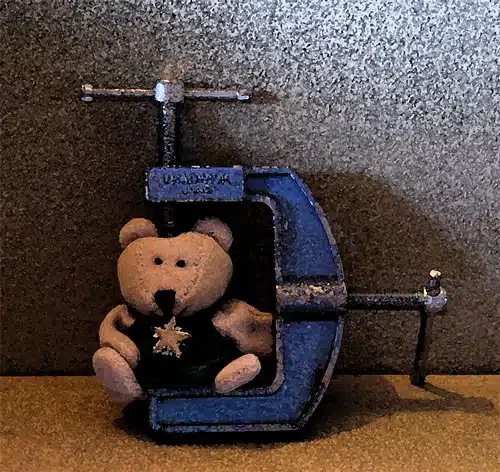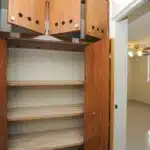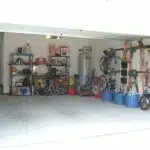Downsizing can be a difficult and emotional process, but it is becoming increasingly common as people seek to simplify their lives and reduce their financial obligations. Whether you are downsizing because of a change in your financial situation, a desire to declutter your home, or simply because you want to live a more minimalist lifestyle, there are several key steps you can take to make the process smoother and less stressful.
In this article, we will explore some of the best strategies for downsizing your possessions and living space. From decluttering tips to organizational methods, we will provide practical advice that you can use to downsize effectively and achieve your goals. Whether you are looking to downsize your home, your belongings, or both, this article will provide you with the insights and tools you need to succeed in this challenging but rewarding endeavor.
Assessing Your Current Living Situation
One of the most significant decisions a person can make in their life is downsizing. It is an essential step that requires a lot of thoughtful consideration and planning. Downsizing means reducing your living space, belongings, or both. There are numerous benefits to downsizing, including financial stability, easier maintenance, less cluttered living spaces, and more freedom.
However, many people face common obstacles when considering downsizing. One major hurdle is the emotional attachment to one’s possessions and memories associated with them. Another obstacle is fear of losing independence or privacy by moving into a smaller space or sharing it with others. These challenges can be overcome by focusing on the positive aspects of downsizing and working through the emotions associated with letting go.
Assessing your current living situation is the first step towards successful downsizing. Start by taking inventory of your belongings and assessing your current living space’s suitability for your needs. Consider what items you use frequently and what items you can do without. This process will help you identify areas where you can downsize effectively and determine what goals you need to set for yourself to achieve them.
Setting Goals For Downsizing
When it comes to downsizing, setting goals can be an essential step in the process. Creating a vision for what you want your life to look like after downsizing is crucial. Take some time to reflect on what is most important to you and consider how downsizing could help you achieve those priorities.
Establishing priorities can also play a significant role in setting goals for downsizing. Identify the items or possessions that are most meaningful to you and prioritize them accordingly. For example, if spending more time with family is a top priority, then downsizing your home may be an excellent way to free up more time for quality family interactions.
Overall, setting goals for downsizing can help ensure that the process goes smoothly and that you achieve the results you desire. By creating a vision of what you want your life to look like after downsizing and establishing clear priorities, you will be better equipped to make informed decisions about what items or possessions are worth keeping and which ones are not. With these goals in mind, you can move forward with confidence as you begin the next phase of your life.
As we move forward in our discussion on downsizing, the next logical step is creating a plan of action. With clear goals in mind, taking specific steps towards achieving them becomes much more manageable. So let’s dive into some practical ways that we can start working towards our downsize goals!
Creating A Plan Of Action
Just like a sailor charting a course, setting goals for downsizing is the first step towards achieving a clutter-free lifestyle. But creating a plan of action is where the real work begins. This phase involves breaking down your goals into smaller, more manageable tasks.
Breaking it down means taking each goal and identifying the specific actions needed to accomplish it. For instance, if your goal is to declutter your wardrobe, you could break it down into sub-tasks such as sorting through clothes by season, deciding what to keep or donate, and organizing the remaining items in a more efficient manner. By dividing your goals into smaller steps, you’ll find that they become less overwhelming and easier to achieve.
Staying motivated during the downsizing process can be challenging. To combat this, try incorporating small rewards for yourself along the way. For example, after completing a specific task such as decluttering one room in your house, treat yourself to something you enjoy like reading a book or taking a long bath. Additionally, consider enlisting the help of friends or family members who can provide support and encouragement throughout the process. With determination and support from others, staying motivated becomes much easier.
Sorting your belongings may seem like an overwhelming task at first glance but by breaking it down into smaller steps and staying motivated along the way; it’s possible to create an actionable plan that will get you closer to achieving your downsizing goals. In our next section, we’ll talk about how to sort through your belongings efficiently without feeling overwhelmed.
Sorting Your Belongings
When it comes to downsizing, sorting your belongings is an essential task. This process can be overwhelming, and it’s crucial to have a solid plan in place. Decluttering techniques can help make the process more manageable, such as starting with one room at a time or breaking down larger spaces into smaller sections. It’s also helpful to set goals for each sorting session, like working through one category of items per day or filling up one donation bag per session.
As you sort through your belongings, keep in mind the minimalist lifestyle that you are striving for. Ask yourself if each item is something that brings value and purpose into your life. If not, consider letting it go. It’s important to remember that downsizing is not about getting rid of everything but rather keeping only what serves you best. Keep sentimental items and things that bring joy, but be mindful of excess clutter.
Sorting your belongings is just the first step in downsizing; deciding what to keep is the next crucial step. As you continue on this journey towards a simpler life, it’s important to stay focused on your goals and values. Remember why you started downsizing in the first place and let go of any guilt or attachment to things that no longer serve a purpose in your life. With a clear mindset and commitment to living with intentionality, downsizing can become a fulfilling and transformative experience for both yourself and others around you.
Deciding What To Keep
When downsizing, deciding what to keep can be a daunting task. It is important to approach this process with a minimalist mindset, focusing on practicality rather than emotions. One useful method is to make a list of essentials and prioritize items accordingly. Keep in mind that the goal is to simplify your life and reduce clutter.
It is common for people to hold onto items because of sentimental value, but it is important to distinguish between practicality and emotions. Consider if an item serves a purpose or if it simply takes up space and causes unnecessary stress. If you have trouble letting go of sentimental items, try taking photos or creating a memory box with select items instead.
When downsizing, it can be helpful to remember that possessions do not define who we are. Holding onto excess items can actually hinder our ability to fully appreciate the things that truly matter in life, such as relationships and experiences. By reducing our belongings, we are able to focus on what really matters and live a more fulfilling life. In the next section, we will explore ways to let go of sentimental items in order to further simplify our lives.
Letting Go Of Sentimental Items
Sorting through items with emotional attachment can be a difficult task, but it is possible to downsize and manage the clutter in one’s life.
Establishing criteria for what to keep and what to let go of is key to saying goodbye to possessions.
Setting sentimental items aside for a time can help to emotionally distance oneself and create clarity when deciding whether or not to keep them.
Creating rituals or meaningful activities to honor the memory of a person or event associated with an item can help to minimize emotional clutter.
Taking a picture of a sentimental item or writing a story or letter about it can help to preserve memories without having to keep the object.
Donating items can be an effective way to let go of the item while still honoring the memory it holds.
Sorting Emotional Attachments
Sorting through sentimental items can be a daunting task, especially when emotions are deeply attached to them. However, downsizing requires letting go of certain items that no longer serve a purpose in our lives. One way to approach this is by identifying triggers that cause emotional attachment to certain possessions.
The process of identifying triggers involves acknowledging the emotions associated with each item and evaluating whether they are serving a positive or negative purpose in our lives. Seeking professional help from a therapist or downsizing expert can also provide guidance on how to navigate through these emotions and make informed decisions about what to keep and what to let go of.
Ultimately, sorting emotional attachments is an important step towards downsizing. By letting go of sentimental items that no longer serve a purpose in our lives, we create space for new experiences and memories. It may be difficult at first, but with patience and practice, it becomes easier to distinguish between what truly matters and what we can let go of.
Saying Goodbye To Possessions
Letting go of sentimental items can be a challenging process, especially when we have emotional attachments to them. However, it is an important step towards achieving minimalist living. One way to approach this is by saying goodbye to possessions that no longer serve a purpose in our lives. This may involve evaluating each item and determining whether it brings joy or negativity into our lives.
Saying goodbye to possessions requires us to acknowledge the emotional attachment we have towards each item. It can be helpful to reflect on the memories associated with the possession and evaluate its importance in our lives. Sometimes, we may find that certain items no longer hold the same value as they once did, and it is time to let them go. By doing so, we create space for new experiences and memories.
While saying goodbye to possessions can be difficult, it is a necessary step towards achieving minimalism and simplifying our lives. It allows us to focus on what truly matters and let go of unnecessary clutter that weighs us down emotionally and physically. In doing so, we are able to cultivate a sense of peace and contentment within ourselves, knowing that we are only surrounded by things that bring value into our lives.
Minimizing Emotional Clutter
As we continue our journey towards minimalist living, it is important to address emotional clutter. Emotional clutter refers to the negative emotions and thoughts that weigh us down and prevent us from living a fulfilling life. This can manifest in various ways, such as holding onto sentimental items that no longer bring joy or surrounding ourselves with toxic relationships. Identifying emotional triggers and practicing mindfulness techniques can help us minimize emotional clutter.
Letting go of sentimental items is one way to minimize emotional clutter. As we evaluate each item and determine its importance in our lives, we may uncover underlying emotions and attachments that are holding us back. By acknowledging these emotions and letting go of possessions that no longer serve a purpose, we create space for positive growth and healing. Practicing mindfulness techniques such as meditation or journaling can also help us process these emotions and release them.
It is important to note that minimizing emotional clutter is an ongoing process. It requires consistent effort and self-reflection to identify and address negative emotions as they arise. However, by doing so, we can cultivate a sense of inner peace and clarity that allows us to focus on what truly matters in our lives. Letting go of sentimental items is just one aspect of this journey towards minimalism, but it can have a powerful impact on our overall well-being.
Selling Or Donating Unwanted Items
When downsizing, it’s important to get rid of any unwanted items that won’t be coming with you to your new home. One way to do this is by selling or donating them. While both options have their pros and cons, it ultimately comes down to personal preference and what is most important to you.
Garage sales are a popular option for selling unwanted items. They allow you to make some extra cash while also getting rid of clutter. However, they can be time-consuming and require a lot of effort in terms of organizing and advertising. Additionally, the amount of money you make may not always be worth the time and energy put into it.
Donating unwanted items is another option that allows you to give back to those in need while also decluttering your space. Finding the right organization can be a challenge but there are many reputable charities that accept donations such as Goodwill or The Salvation Army. Donating also has environmental benefits as it keeps items out of landfills and gives them a second life with someone who needs them.
- Pros and cons of garage sales vs. donation
- Garage sale pros:
- opportunity to make some extra cash
- get rid of clutter
- Garage sale cons:
- time-consuming
- requires a lot of effort in terms of organizing and advertising
- may not always be worth the time and energy put into it.
- Donation pros:
- give back to those in need
- declutter your space
- environmental benefits
- Donation cons:
- finding the right organization can be a challenge
In summary, when deciding whether to sell or donate unwanted items during downsizing, consider what is most important to you. If making some extra cash is a priority, then hosting a garage sale may be the best option for you. However, if giving back and helping others is more important, then donating may be the way to go. Regardless of which option you choose, be sure to do your research and find the right organization or venue to ensure that your unwanted items are put to good use. In the next section, we’ll discuss how to maximize your storage space in your new home.
Maximizing Your Storage Space
After selling or donating unwanted items, it’s time to focus on maximizing your storage space. Downsizing can be a challenge, but with the right tools and techniques, it can become an opportunity to simplify your life. One of the most effective ways to maximize your storage space is through DIY solutions. You can start by decluttering your home and organizing everything efficiently.
There are various DIY storage solutions that you can implement without breaking the bank. For instance, you can use shelves, baskets, and hooks to create additional storage space in your closets or under the bed. Additionally, you can use drawer dividers and organizers to keep everything neat and tidy.
If DIY solutions are not enough, you may want to consider professional organization services. These experts have years of experience in creating efficient spaces that maximize every inch of your living area. They will assess your needs and provide customized solutions that fit your lifestyle and budget.
| Column 1 | Column 2 | Column 3 |
|---|---|---|
| Less stress | More living space | Better quality of life |
| Simplified routines | Enhanced functionality | Increased productivity |
| Greater mobility | Improved aesthetics | Reduced maintenance |
Maximizing storage space is just one step in downsizing. The next step involves choosing a new living space that meets all your needs while still being affordable and manageable. Whether you decide to move into a smaller apartment or buy a tiny house, there are many options available for those who want to simplify their lives. In the next section, we will explore some strategies for choosing a new living space that fits your downsizing goals seamlessly.
Choosing A New Living Space
When it comes to downsizing, choosing a new living space is a crucial step. Finding affordable options that meet your needs and preferences can be challenging, but it’s not impossible. One way to start is by researching different neighborhoods that fit your lifestyle and budget. Look for areas with lower cost of living or those that offer amenities you value, like access to public transportation or proximity to family and friends.
Another factor to consider when choosing a new living space is location preferences. Do you want to live in the city or suburbs? Are you looking for a quiet neighborhood or one with plenty of social activities? Think about what matters most to you and make a list of must-haves and nice-to-haves. This will help narrow down your options and make the decision-making process easier.
Ultimately, downsizing can be an opportunity for positive change in your life. By choosing a new living space that aligns with your values and needs, you can create a home that supports your goals and aspirations. In the next section, we will discuss ways to adapt to smaller living quarters without sacrificing comfort or style. So don’t worry if you’re feeling overwhelmed – there are plenty of resources available to help make the transition as smooth as possible.
Adapting To Smaller Living Quarters
Downsizing possessions can be a difficult but rewarding process. It is important to focus on the value of the items, letting go of any possessions that do not have real use or sentimental value. Establishing a minimalist lifestyle encourages the use of fewer items and a more organized approach to living. It is important to be mindful of the possessions that one accumulates and to prioritize the items that are necessary. Maximizing space efficiency involves thoughtful organization and creative storage solutions. Utilizing multi-functional furniture and making use of vertical space can help to create a more organized and efficient living space. Overall, downsizing, establishing a minimalist lifestyle, and maximizing space efficiency can help to create a more organized and efficient living environment.
Downsizing Possessions
Downsizing possessions is a crucial step in adapting to smaller living quarters and embracing a minimalist lifestyle. It involves identifying and decluttering items that are no longer necessary or relevant to your current needs. The process of downsizing can be challenging, but it is also an opportunity to simplify your life, reduce stress, and free up space for the things that truly matter.
To begin downsizing, start by setting realistic goals and timelines. Choose one room or area at a time and sort through each item, asking yourself if it serves a purpose or brings you joy. If not, consider donating, selling, or recycling it. Keep in mind that downsizing is not just about getting rid of things; it’s also about creating a more intentional and meaningful life with only the essentials.
Some helpful decluttering tips include using storage solutions like shelves, bins, and baskets to maximize space while keeping items organized. Also, try to adopt a one-in-one-out policy when bringing new items into your home to prevent clutter from building up again. Remember that downsizing is an ongoing process that requires patience and persistence but can ultimately lead to greater clarity, freedom, and fulfillment in your daily life.
In conclusion, downsizing possessions is an essential step towards adapting to smaller living quarters and embracing a minimalist lifestyle. By setting realistic goals, sorting through items with intentionality, utilizing storage solutions and adopting decluttering tips like the one-in-one-out policy you can create more space for what truly matters in your life. Embracing this mindset of simplicity can have profound effects on mental wellbeing while providing ample opportunity for personal growth as well.
Establishing A Minimalist Lifestyle
As we continue to adapt to smaller living quarters, another important aspect to consider is establishing a minimalist lifestyle. Minimalism involves simplifying your life by only keeping the essentials and removing excess clutter. This can be achieved not just through downsizing possessions, but also by adopting minimalist decor and reducing unnecessary expenses.
There are several benefits of downsizing on mental health that align with the principles of minimalism. Cluttered spaces can lead to feelings of overwhelm, stress, and anxiety. By clearing out unnecessary items and creating more space, individuals can experience greater clarity and focus in their daily lives. Additionally, minimalism encourages intentional living and mindful consumption, which can lead to a sense of purpose and fulfillment.
To establish a minimalist lifestyle, start by assessing your current possessions and identifying areas where you can simplify. Consider investing in quality items that serve multiple purposes instead of accumulating cheap, disposable goods. Focus on experiences rather than material possessions and prioritize spending time with loved ones over accumulating more things. By embracing the mindset of minimalism, individuals can create a more intentional and fulfilling life while adapting to smaller living quarters.
Maximizing Space Efficiency
As the trend towards smaller living quarters continues, maximizing space efficiency becomes a crucial aspect of adapting to this new lifestyle. One effective strategy is to invest in space-saving furniture that can serve multiple purposes, such as a sofa bed or a storage ottoman. Additionally, creative storage solutions can help keep clutter at bay and make the most of every inch of space.
For those who are downsizing, it’s important to assess your current possessions and decide which items are truly essential. This may involve getting rid of duplicate items or things that are no longer used or needed. By focusing on quality over quantity and investing in multi-functional pieces, you can create a more streamlined living environment that maximizes space efficiency.
In conclusion, adapting to smaller living quarters requires a shift in mindset towards intentional living and creative problem-solving. With the right strategies and tools, it’s possible to create a comfortable and functional home that meets your needs while taking up less physical space. By embracing the principles of minimalism and space efficiency, individuals can thrive in their new living environment and enjoy all the benefits that come with it.
Downsizing Your Digital Life
It’s ironic how digital technology was supposed to simplify our lives, yet it has become a burden that overwhelms us. We’re constantly bombarded with notifications, emails, and social media updates that consume our time and attention. But there’s hope for those who want to reclaim their sanity and live a simpler life. It starts with digital decluttering.
Digital decluttering is the process of removing the unnecessary and organizing what’s left. It’s about being intentional with your digital life as you would be with your physical possessions. With a minimalist mindset, you can prioritize what truly matters and let go of the rest. Here are four steps to get you started:
- Audit Your Digital Life: Take inventory of all your digital accounts, devices, and subscriptions.
- Unsubscribe and Unfollow: Remove any subscriptions or accounts that no longer serve you.
- Organize Your Files: Create a system for organizing your files on your computer and in the cloud.
- Schedule Regular Maintenance: Set aside time each week or month to review your digital life and make necessary adjustments.
By downsizing your digital life, you’ll free up mental space and create more time for the things that matter most. You’ll be able to focus on relationships, personal growth, and meaningful experiences instead of being consumed by screens. In the next section, we’ll discuss another aspect of simplifying your life – managing your finances – so you can live more intentionally in every area of your life.
Managing Your Finances
Transitioning from downsizing your digital life, it’s time to focus on managing your finances. This can be a daunting task for many, especially if you’re dealing with debt or have not yet established a budget. However, with the right strategies and mindset, you can take control of your finances and work towards a more financially stable future.
First and foremost, creating a budget is essential when it comes to managing your finances. Budgeting tips include tracking your income and expenses, setting financial goals, and prioritizing your spending. By doing this, you’ll be able to identify areas where you may be overspending and make necessary adjustments. Additionally, having a budget in place can help reduce stress and anxiety around money management.
Debt management strategies are also crucial when it comes to taking control of your finances. It’s important to prioritize paying off high-interest debts first while making minimum payments on other debts. Consider consolidating debts or seeking out credit counseling services if necessary. With dedication and perseverance, you can work towards becoming debt-free and achieving financial freedom. Remember that seeking support from loved ones can also be helpful in navigating the ups and downs of managing your finances.
Table:
| Financial Goals | Emotions evoked | Action Steps |
|---|---|---|
| Saving for emergency fund | Security | Set a monthly savings goal |
| Paying off debt | Relief | Prioritize high-interest debts |
| Investing for retirement | Excitement for future | Research options and start small |
Transition: Seeking support from loved ones is an important aspect of managing your finances, as it can provide accountability and emotional support during challenging times.
Seeking Support From Loved Ones
- When downsizing, having the support of family and friends can be essential for success.
- It is important to open up a dialogue about the downsizing process with family members, so that everyone is on the same page.
- Friends can also be an invaluable ally in providing emotional support and practical advice throughout the process.
- Having a good support system can make the transition to a smaller living space much easier.
Talking To Family
Downsizing can be an emotional journey, and seeking support from loved ones is crucial in making the process more bearable. However, talking to family about downsizing can come with its own set of challenges. Handling resistance and addressing concerns are necessary steps to ensure that everyone is on board with the decision.
Handling resistance from family members is a common obstacle when it comes to downsizing. Some may feel attached to belongings and memories associated with them, while others may worry about losing their independence or sense of control over their lives. It’s important to approach these conversations with empathy and understanding, acknowledging that everyone has their own unique perspective on the matter. Encourage open communication and allow for space where family members can express their concerns without judgment.
Addressing concerns is another critical aspect of talking to family about downsizing. It’s essential to take each concern seriously, no matter how trivial it may seem. Whether it’s worries about living arrangements or financial matters, discussing these issues as a family can help alleviate anxiety and pave the way for a smoother transition. Consider involving a professional downsizing expert who can provide guidance and reassurance during this process.
In conclusion, while talking to family about downsizing may not be easy, it’s necessary in making the transition as smooth as possible. Handling resistance and addressing concerns are key components that need to be addressed for everyone involved in the decision-making process. By approaching these conversations with empathy and understanding, families can work together towards achieving a successful downsizing experience that benefits all parties involved.
Friends As Allies
When it comes to downsizing, seeking support from loved ones is crucial in making the process more bearable. While family members are often the go-to for emotional support, friends can also play a vital role in providing encouragement and assistance. Supporting friends can be particularly helpful when family members are not available or unable to provide the necessary help. Additionally, friends may offer networking opportunities that can connect individuals with downsizing experts and other resources.
Friends as allies in the downsizing process can provide a unique perspective that family members might not have. Friends who have gone through similar experiences can offer valuable advice and share their own downsizing stories, which can help alleviate anxiety and provide reassurance. Furthermore, friends may be more objective about belongings and memories associated with them, which can be an asset when sorting through items.
In conclusion, seeking support from friends as allies during the downsizing process is essential in creating a positive experience. Friends offer unique insights and networking opportunities that can make the transition smoother. By incorporating supportive friends into the downsizing journey, individuals gain a network of people who share their vision of a simpler and more fulfilling life.
Coping With Emotional Challenges
Picture this, you’ve finally made the decision to downsize and have started the downsizing process. You’ve given away or sold many of your possessions, and now the house is practically empty. Even though it’s a necessary step, downsizing can be emotionally challenging. It’s hard to let go of things that hold so many memories.
Finding closure is a critical component of coping with emotional challenges during the downsizing process. One way to find closure is by taking time to reflect on your life and all the memories connected with your belongings. It’s normal to feel sad or even anxious about letting go, but remember that it’s okay to feel these emotions. Acknowledge them, appreciate them, and then release them. Another way to find closure is by creating a ritual around letting go of some items. For example, you might say goodbye to each item as you give it away or donate it.
In some cases, seeking professional help may be necessary when coping with emotional challenges during downsizing. Professional help can come in different forms such as therapy sessions or support groups for people going through similar situations as yourself. These resources provide an outlet for expressing your feelings without fear of judgment while getting practical advice from professionals who understand what you’re going through.
In conclusion, coping with emotional challenges during downsizing requires finding closure and possibly seeking professional help if needed. Remember that it’s okay to feel sad or anxious; these emotions are natural given how much we attach ourselves to our belongings over time. Take time to reflect on your life while creating rituals around letting go of certain items if necessary. Seek help when needed because there are resources available for those going through similar experiences as yourself. Next up: celebrating your accomplishments!
Celebrating Your Accomplishments
Reflecting on your achievements is a crucial step in downsizing. It allows you to recognize all of the hard work and dedication you put into your life. Take time to think about what you have accomplished, both big and small, and appreciate yourself for all that you have done.
Practicing gratitude is another important aspect of downsizing. When we focus on what we are grateful for, we shift our perspective towards the positive elements of our lives instead of dwelling on what we may be losing during this transition. Take time each day to reflect on what you are thankful for, whether it be your health, relationships or simply having a roof over your head.
By celebrating your accomplishments and practicing gratitude, you will be able to approach downsizing with a more positive mindset. Remember, downsizing does not diminish the value of your achievements or who you are as a person – it merely means that it is time for a change. Embrace this new chapter in your life with open arms and the knowledge that you have achieved so much already.
- Make a list of your top 10 achievements in life
- Write down three things that you are grateful for every day
- Create a gratitude jar where you can jot down things you’re thankful for throughout the year
- Celebrate small accomplishments as they happen by treating yourself to something special – such as a favorite dessert or activity
Conclusion
Downsizing can be a daunting task, but with careful planning and execution, you can successfully transition to a simpler and more manageable lifestyle. Begin by assessing your current living situation and setting realistic goals for downsizing. Create a plan of action that includes sorting through your belongings, deciding what to keep, and managing your finances.
Seek support from loved ones and be prepared to cope with emotional challenges that may arise during the downsizing process. Remember to celebrate your accomplishments along the way, as each step towards simplifying your life is a significant achievement.
As the saying goes, “Rome wasn’t built in a day.” Downsizing is a gradual process that requires patience and perseverance. But with determination and commitment, you can achieve your goal of living a simpler, more fulfilling life in a clutter-free environment. So take that first step today towards downsizing, knowing that every small step will bring you closer to realizing your dream of living light!
Image Credits
- “Downsizing” by Donald Clark (featured)





























